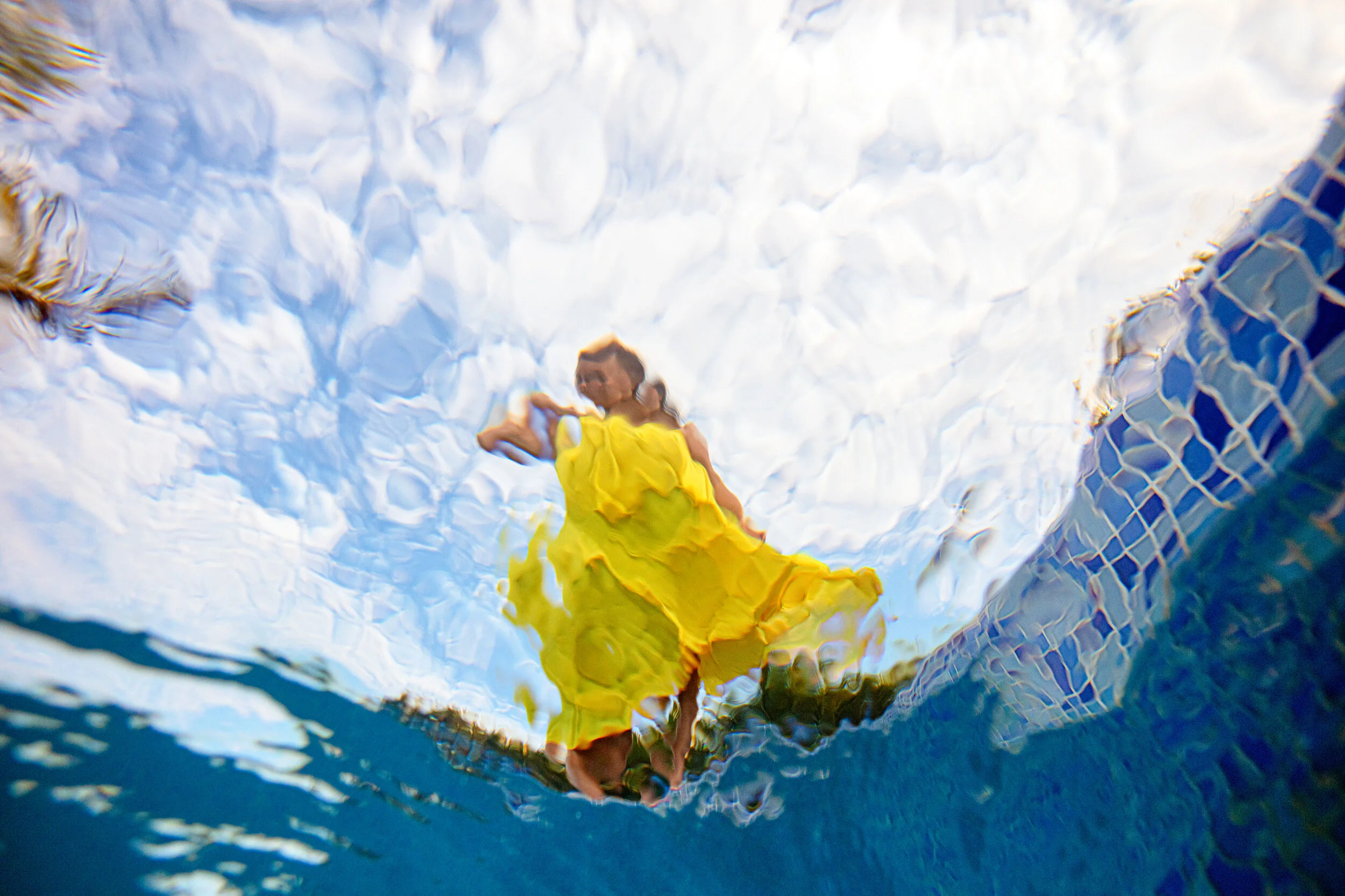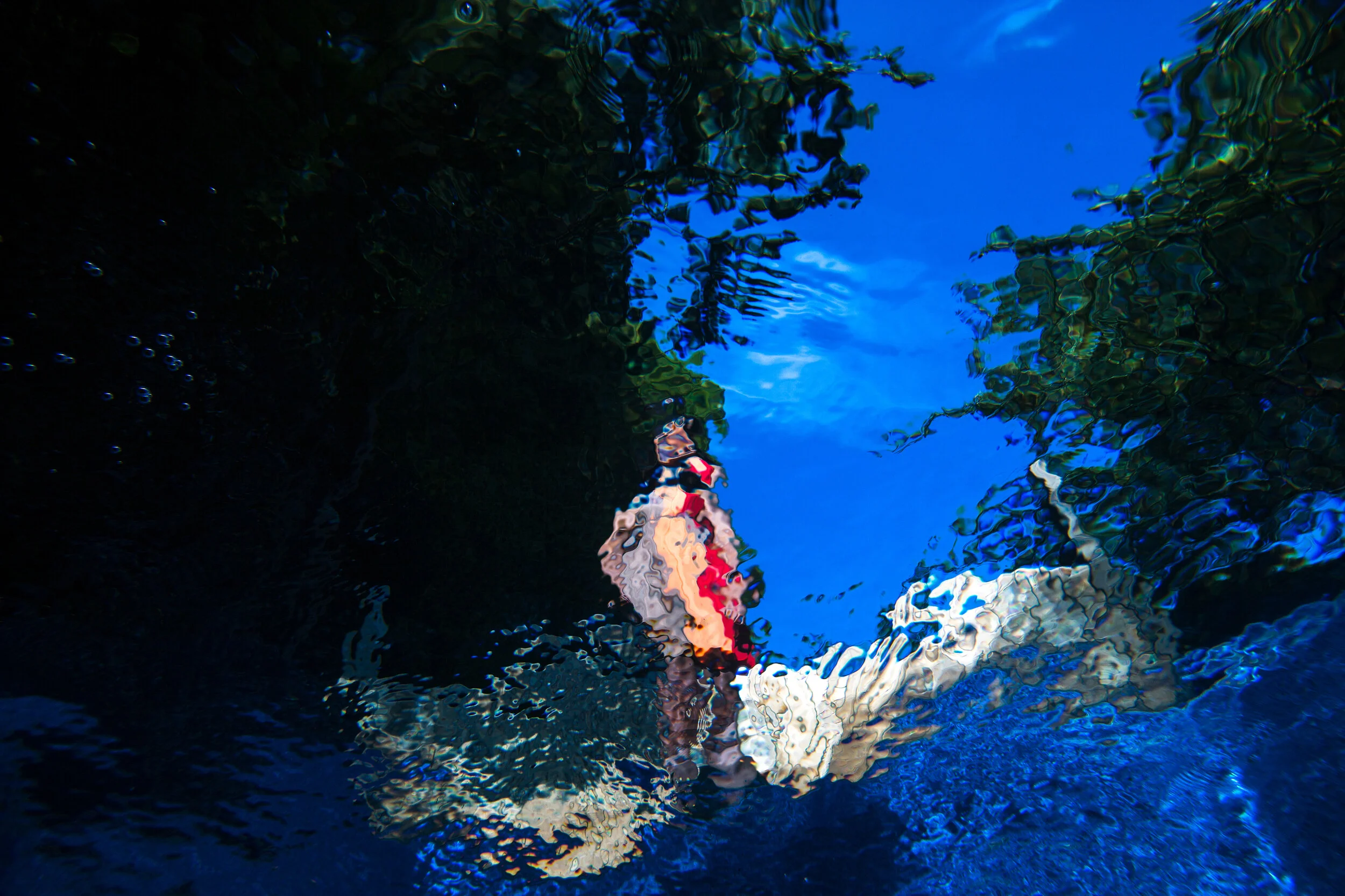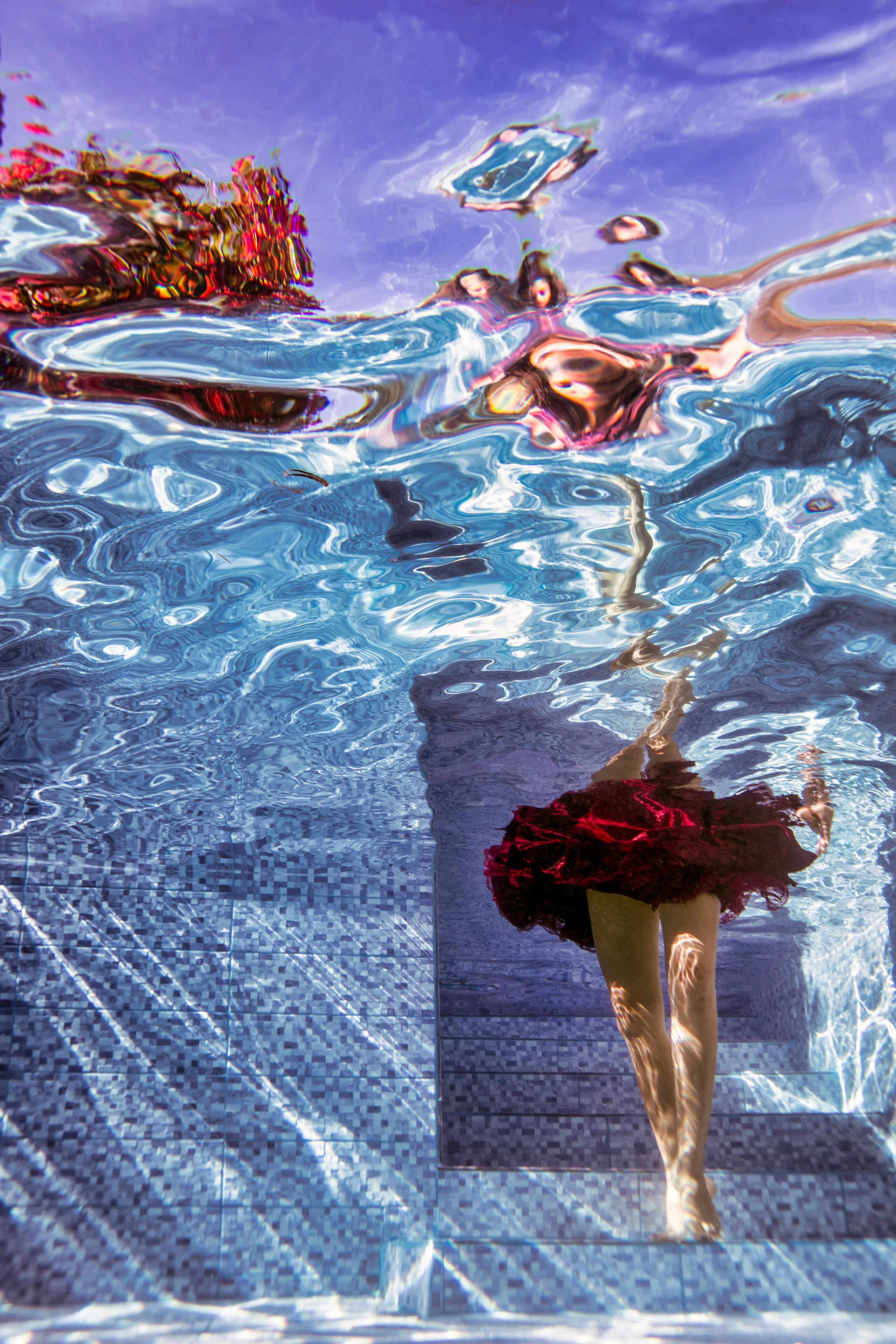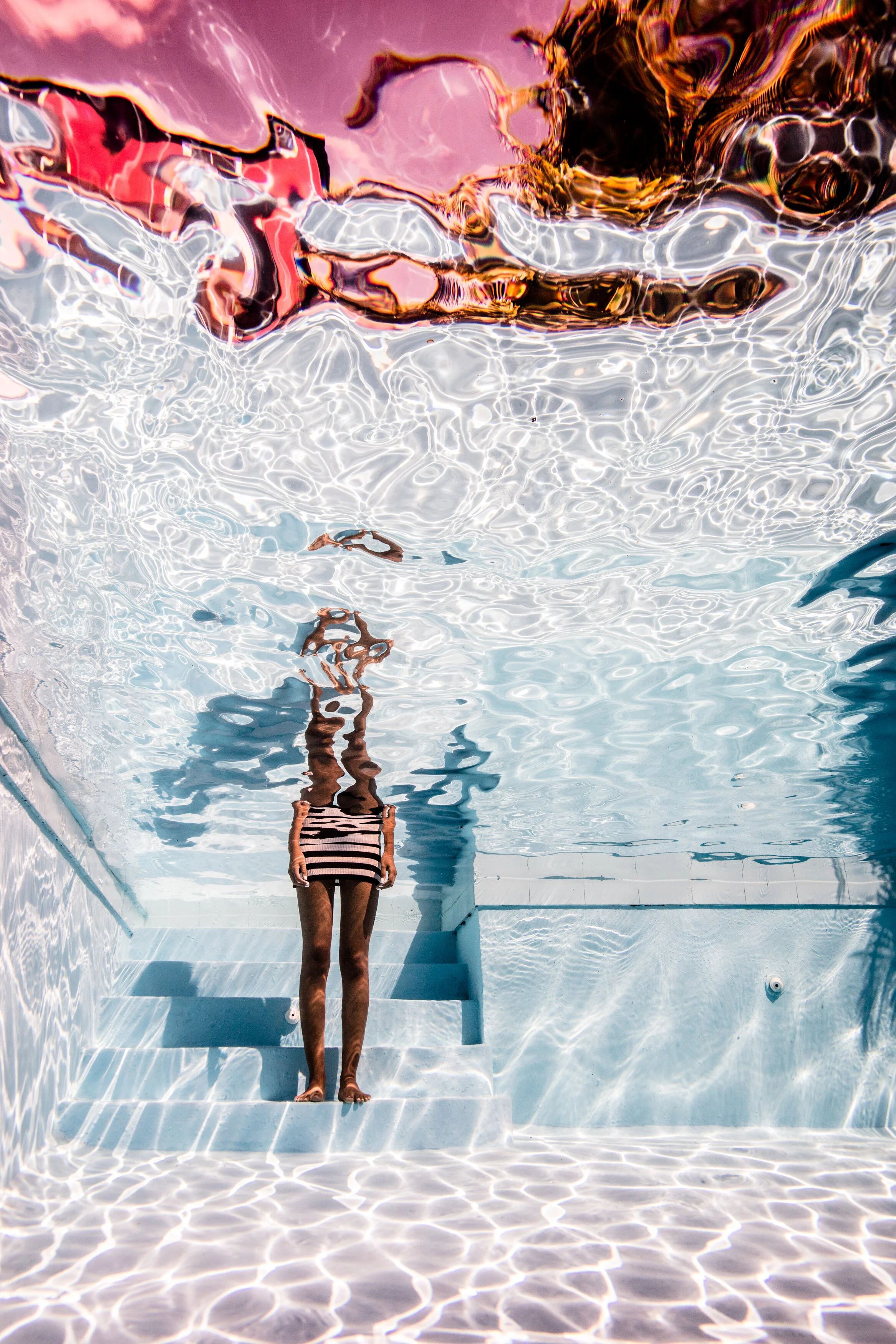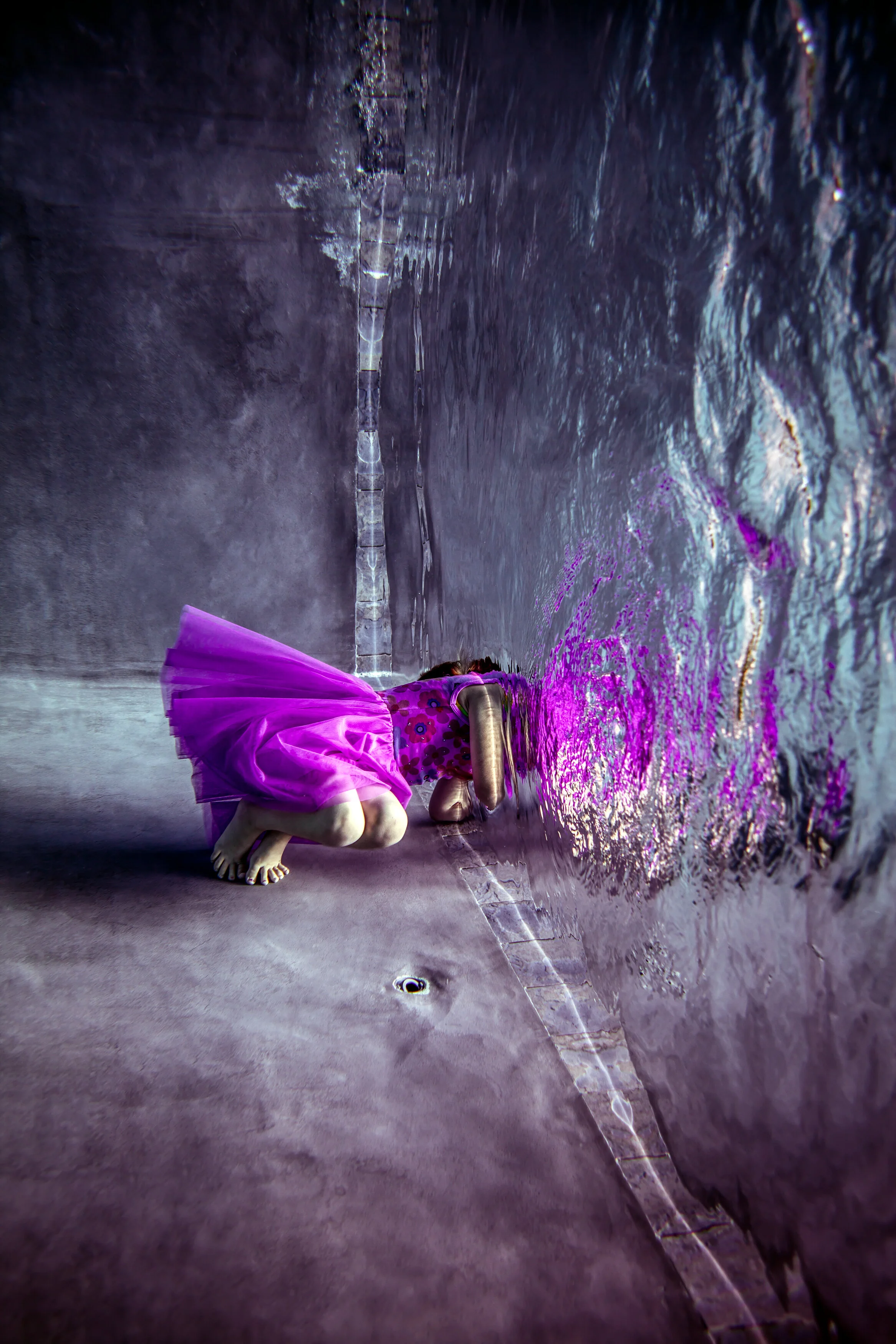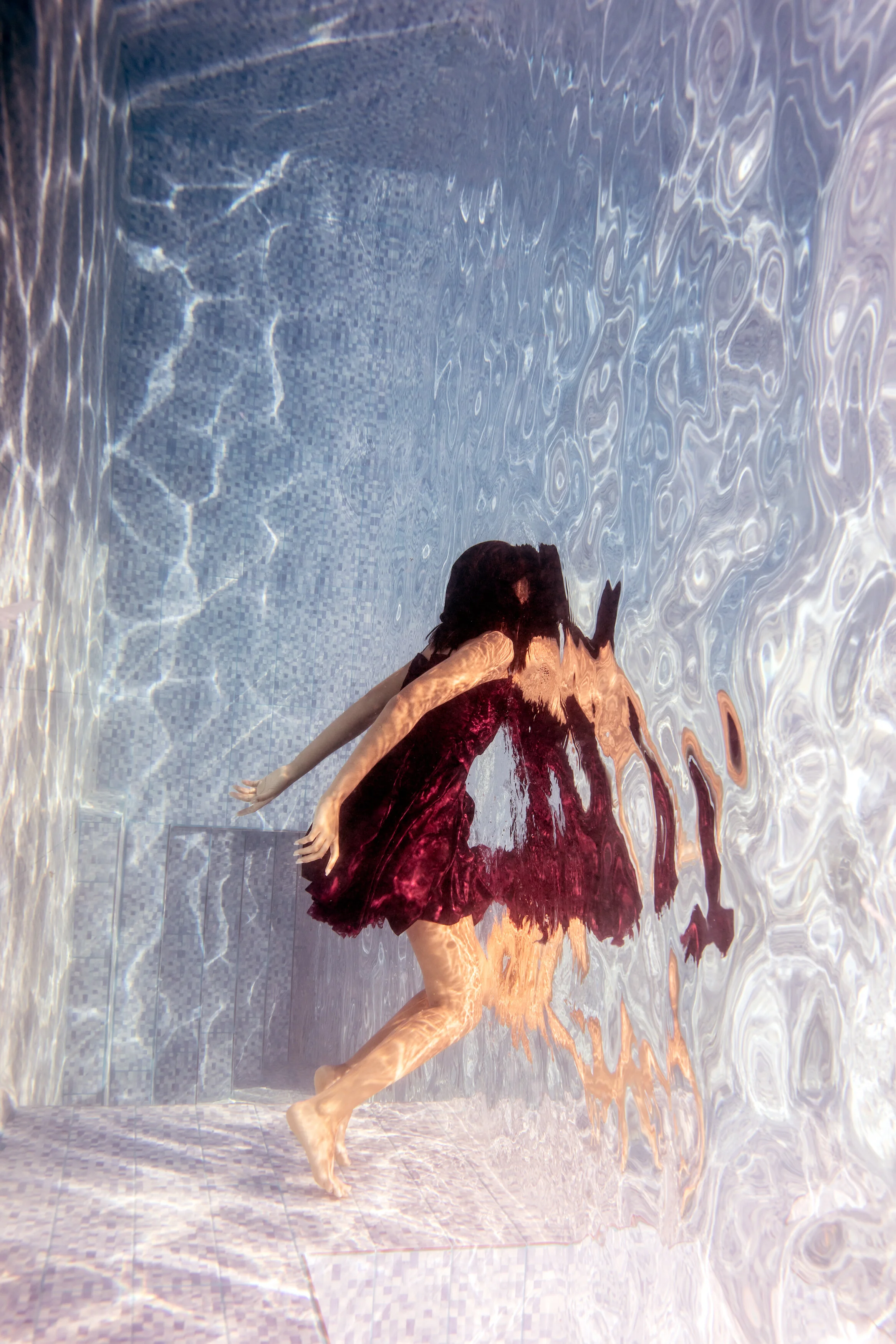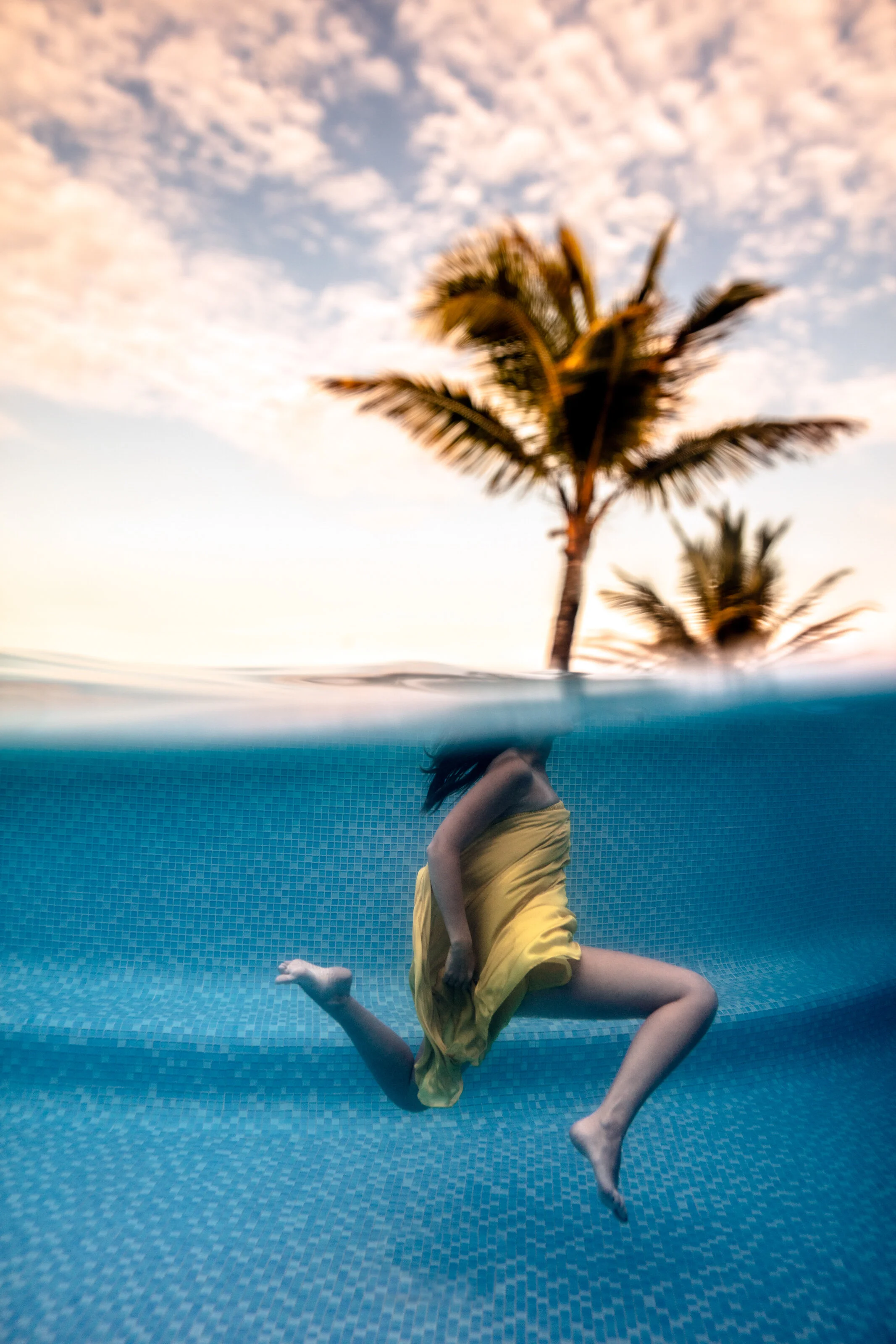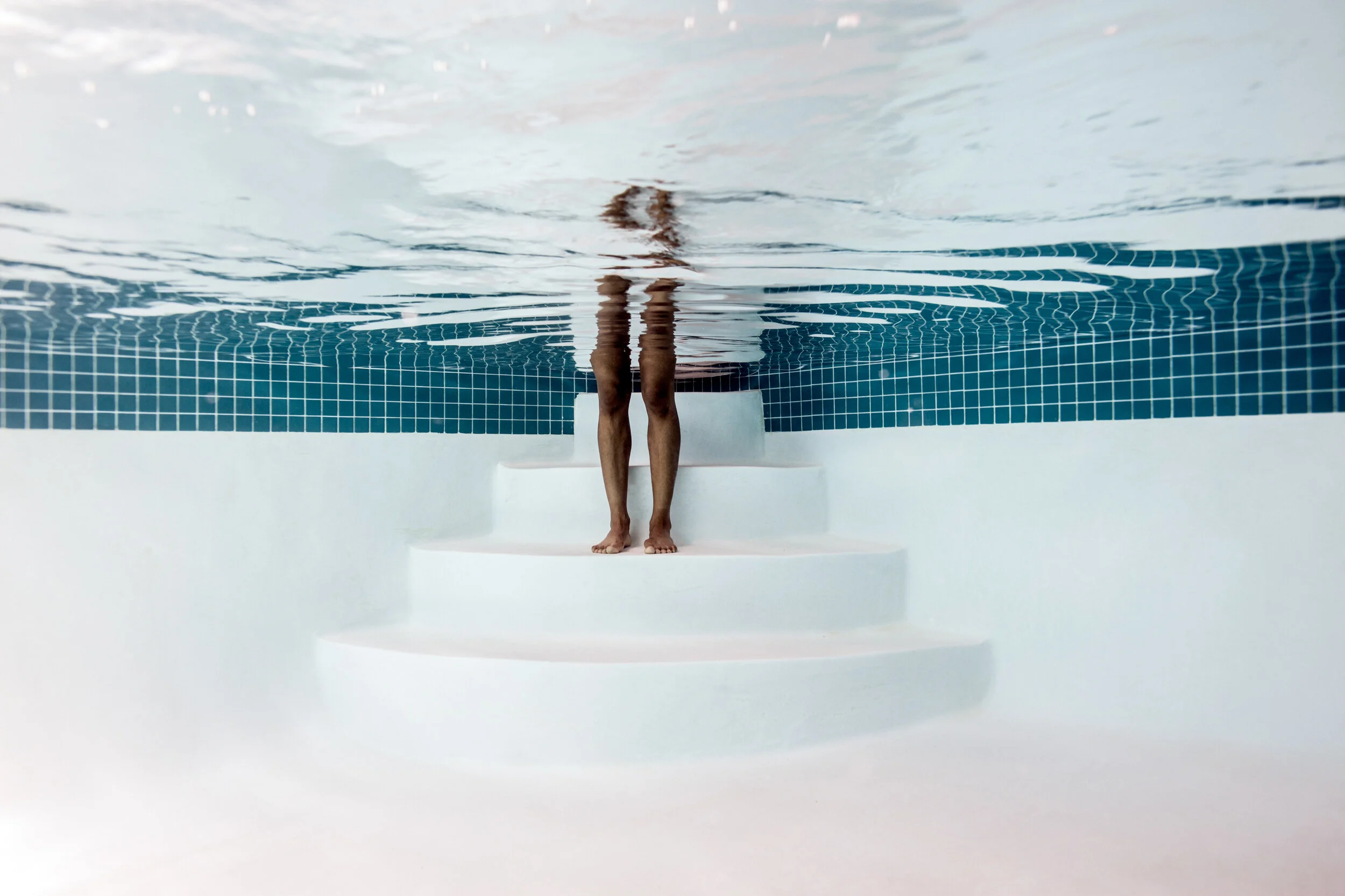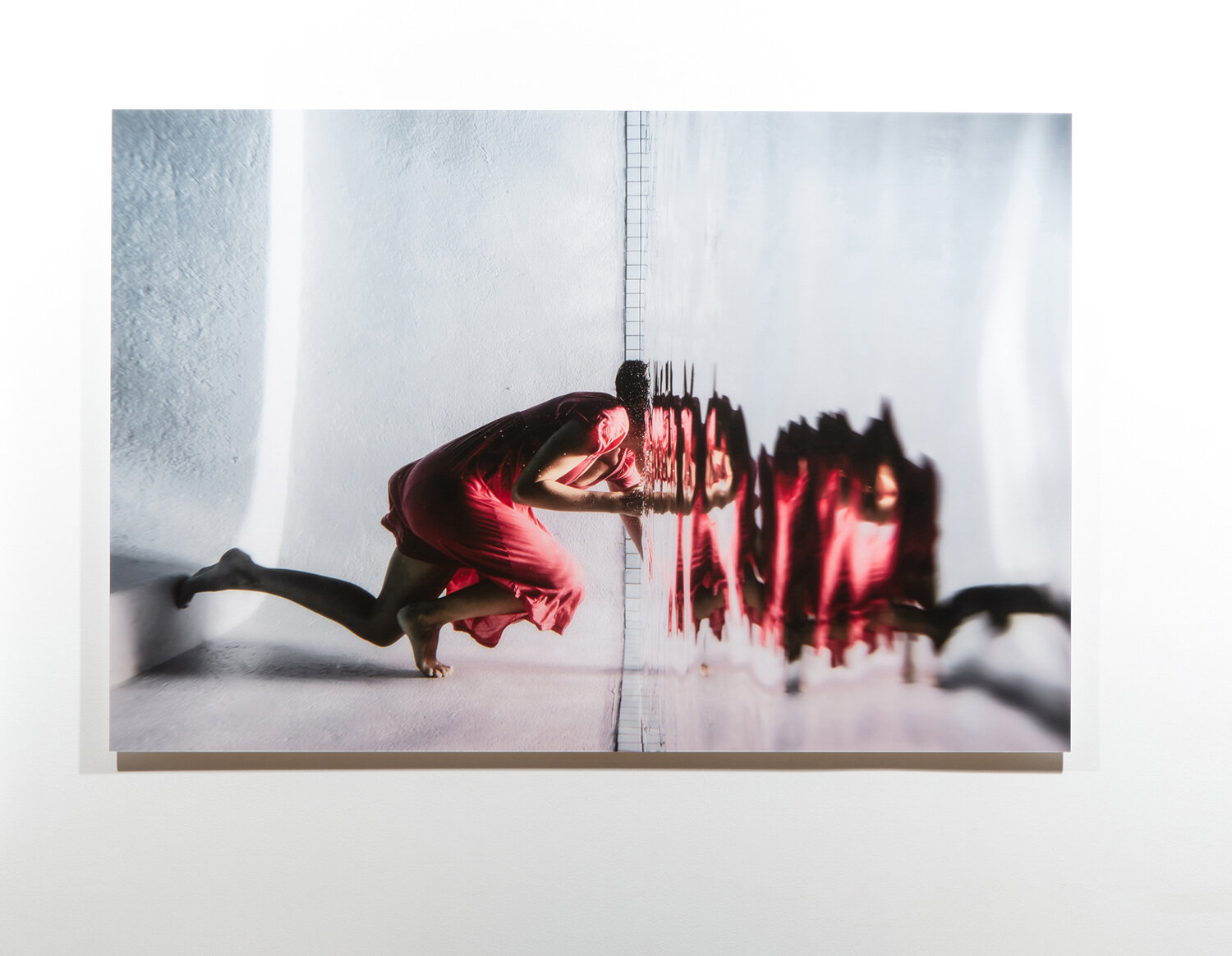Extraordinary Seascapes from Cape Cod’s Award Winning Photographer
Beauty is a picture that has purity, perfect balance in every sense, with no distractions.
Beauty is a picture that has purity, perfect balance in every sense, with no distractions.
INTERVIEW WITH THE PHOTOGRAPHER JENGO ROBINSON
JENGO ROBINSON
ADRIFT is an expression of hot summers in the tropics, the tranquil ocean ebbing and flowing, the sun rising, seagulls flying past. It captures the calm as we drift away from the problems of the world.
LES COULEURS: Do you have a favorite photograph or painting, which inspires you?
JAMES ROBINSON: Many photographs and paintings have inspired my style. If you copy from one source, that's plagiarism. But copying from many sources is research. Henri Cartier Bresson shot a photograph of a young girl running up the steps in Greece. The picture is titled, "Siphnos, Greece." This had a huge impact on my black and white photography. It taught me everything about shape, form, geometry, balance, light. It's a masterpiece. For my landscape work, Manet, Winslow Homer, Edward Hopper, Monet, and Whistler are the most influential artists I've ever come across. I pick certain elements from each. Bold form from Manet, simplicity from Hopper who lived on Cape Cod for many summers, in an area I shoot every year. Homer taught me about oceans, Monet about color, and Whistler breathed an air of melancholy into my lens.
LC: If you could work within a past art movement, which would it be?
JR: Good question, and such a difficult one to answer. For me, art becomes really interesting with the arrival of Manet and the outlandish Dejeuner Sur L'Herbe, summarily rejected by the Salon, which then sparked an art revolution that over the course of fifty years went from Courbet to a blank canvas hanging in the Pompidou Centre. But to answer the question, possibly Fauvism. You can't beat a sketch by Mattise, the genius of simplicity and form.
LC: How would you define beauty in 140 characters or less?
JR: Beauty is a picture that has purity, perfect balance in every sense, with no distractions.
JENGO ROBINSON
ELPIS personified hope in Greek mythology. In this image, the first rays of sun on the water created soft pinks and blues, light yellow, whites… the palette of life and hope throughout the modern era of art.
LC: What is your favorite art gallery in New York and why?
Being more of a classicist, the Met. It's America's answer to Europe and contains four rooms of Impressionist and Post-Impressionist paintings - great works by Manet, Renoir, Pissarro, Seurat, Monet. The rooftop sculpture garden is also a sanctuary in New York, overlooking Central Park.
LC: Name three photographers you’d like to be compared to.
JR: I'd be happy with Hiroshi Sugimoto who created the Seascapes series that studies our relationship with time. Edward Weston, a master at finding patterns in landscapes and vegetables. And of course, the legend, Ansel Adams.
LC: Do you interact with the digital world/technology in your work?
JR: I use a couple of editing programs, but stay as close to the truth as possible. Over editing is rife in modern photography, and takes away from the purity of the work.
LC: Which writer or poet do you return to the most?
JR: Hemingway's short stories. I love his prose. One can learn a lot about life in the pages of Hemingway.
LC: What was your happiest moment being involved in photography?
JR: It was Vermont this October shooting the leaves. I had never been, even though I'd spent a lifetime on Cape Cod in the summers. I never realized the sugar maples in the Northeast Kingdom were the unequivocal heroes of autumnal color. The landscape was the most brilliant reds and yellows I had ever seen.
LC: If you could live with just one work of art, what would it be?
JR: I'd have to select an iconic painting from the turn of the last century . . . "A Sunday Afternoon on the Island of La Grande Jatte" by Seurat would be incredible to have on the wall. It's enormous and so stylized.
JENGO ROBINSON
CROSSWINDS is a study of ‘chop’ as it’s called in the sailing community, which is the short, staccato rhythm of an ocean under stiff wind and a shallow seabed. Using a long exposure at dawn, and moving the camera in the direction of the waves, the water was transformed.
JENGO ROBINSON
LEEWARD The ocean was calmer; the rising sun hidden by a cloud bank in this hazy atmosphere, handcrafted with intentional camera movement. The resulting photograph could have been painted by an old master.
JENGO ROBINSON
As a photographer, I am fascinated by the ocean’s expressions, its interactions with light and wind. TEMPEST is like an ancient story of the sea, the tumultuous weather, the days of never seeing land, lost in a landscape of storms and vanishing horizons.
JENGO ROBINSON
UNDULATION is a study of the rise and fall of the ocean, the impermanence of waves, the great intangibles of the Earth. It represents our ephemeral natures, and while our spirits can be directed to an eternal object, our bodies, passions, and imaginations are in continual change.
JENGO ROBINSON
MOONTIDE Miami Beach under the Wolf Moon, a receding ocean in the evening light, the wind still pushing long Atlantic breakers onto the endless shore. The wet shimmering sand in the moonlight captures the essence of emptiness, perhaps solitude, and the easy sound of the ocean.
JENGO ROBINSON
SKETCHES is a carefully constructed ocean abstract, to resemble an artist's sketch, with clear lines that could have been drawn by hand. It forces the viewer to see the gentle rise and fall of the seascape, the multitude of colors, and how the light falls so perfectly on the water.
JENGO ROBINSON
LUSARIS is the goddess of serenity, famed for returning things that have been forcibly altered from their natural states. This is the Atlantic after days of wind, rain and big ocean breakers, returned once more to a calm jewel at sunrise.
JENGO ROBINSON
HEMERA is the Greek goddess of daytime, and this ocean abstraction contains everything I love about coastal morning light. The platinum sky, the muted blue water, the sunlight behind a distant cloud bank. Shot with intentional camera movement, it changes the elements to broad brushstrokes of nautical color.
JENGO ROBINSON
CRESCENDO catches the last glint of sunlight on the raging green ocean. The striations on the white water, the wisps of smoke on the crest of the wave stark against the approaching night, is the height of this Atlantic roller’s dramatic course.
JENGO ROBINSON
CALYPSO the goddess-nymph of love, beauty, and seduction who detained the hero Odysseus for many years in the course of his wanderings after the fall of Troy, with the promise of immortality. The image embodies the lure of the ocean, also a dangerous seductress. You can almost feel Calypso’s ancient spirit beneath the swashbuckling tide.
Robin Cerutti Wants to Make You Dream
Exchanging Microprocessors for The Blue Waters.
Exchanging Microprocessors for The Blue Waters.
INTERVIEW WITH THE PHOTOGRAPHER ROBIN CERUTTI
ROBIN CERUTTI
From the artist’s archives
LES COULEURS: What is your goal?
ROBIN CERUTTI: My dream is to reach a point where I’m fully free to create as well as to develop new technologies that I can use in my creative process.
LC: What’s your background?
RC: I used to be a scientist. I have both an engineering degree and a Ph.D. In my previous life, I was focused on developing new technologies, building transistors and microprocessors.
LC: What dream do you pursue?
RC: When I started to create art, the photographic medium was a new way for me to escape. And not only through the creating but also through the development process. After 10 years of being a full-time artist, I realized that the reason I do it is to make people reach a dreamy or pensive state, one person at a time. Thus the dream I pursue is to make people dream.
LC: If you could live with just one work of art, what would it be?
RC: Right now I don't really have a proper place to call home so I love to carry with me a tiny painting from my sister that I really like. I would love to have a photograph from Bart Pogoda somedays. He is the friend who made me discover the medium years ago.
LC: What role does the artist have in society?
RC: I believe that artists, through their creation allow people to feel inspired, question their reality and perception. Artists follow their own path and express themselves through their own themes instead of looking for instant gratification. They open the mind to different points of view. They share and give emotions as well as shock or provoke change.
ROBIN CERUTTI
From the artist’s archives
LC: Who are your biggest influences?
RC: I have been inspired by my artist friends, they gave me the wish to start exploring my passions. Yet, when I work on my research, I try to not look too much at what other artists do. I try to keep an eye on artists who influence emotions and people, so they can inspire me. However, I am not to be influenced too much.
LC: What are you working on now? Exciting future projects?
RC: Covid slowed my creations down a bit. I spend a lot of time learning mandarin as I would love to go explore new places that I don’t know yet in the near future. As soon as I'll get a new studio I will be looking forward to it.
LC: Can you tell us about your creative process?
RC: I explore different identified series at the same time and generally show them after a couple of years when they get out of trend or daily influences. That is a way to escape the generalized feeling of instant validation that social networks put on us.
LC: Why do you love what you do?
RC: I love to create and get involved in new projects. I switched from science to art to make people dream. I love making reality look surreal, challenging the mind, and be more open to the world around us.
ROBIN CERUTTI
From the artist’s archives
ROBIN CERUTTI
From the artist’s archives
ROBIN CERUTTI
From the artist’s archives
ROBIN CERUTTI
From the artist’s archives
ROBIN CERUTTI
From the artist’s archives
ROBIN CERUTTI
From the artist’s archives
ROBIN CERUTTI
From the artist’s archives
ROBIN CERUTTI
From the artist’s archives















